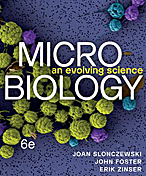Clostridium sporogenes
1. Classification
a. Higher order taxa
Domain Bacteria; Phylum Firmicutes; Class Clostridia; Order Clostridiales; Family Clostridaceae; Genus Clostridium
2. Description and significance
Clostridium sporogenes is a Gram-positive, rod shaped bacteria that exhibits spore production and flagellar motility (ABIS). C. sporogenes can be found in a variety of places including the following: soil, sediment in both marine and freshwater environments, preserved meat and dairy products, fecal matter, snake venom, and infections in domestic animals and humans (ABIS). C. sporogenes is phenotypically similar to other members of its genus C. difficile and C. botulinum; however, while C. botulinum produces the neurotoxin botulinum, which can cause disease in human, C. sporogenes is classified as a harmless biosafety level I organism by the American Type Culture Collection (Kubiak, 2015). This classification of C. sporogenes makes it a candidate for use in the medical field; specifically, the ability of C. sporogenes’ spores to only release its pathogens in a tumor-specific vector will be beneficial in cancer treatments aiming to reduce damage to non-cancerous cells within the host (Theys, 2006).
3. Genome structure
The Clostridium sporogenes DSM 795 genome, which is the first strain of C. sporogenes ever isolated, consists of a single circular chromosome 4.1 Mega-base pairs in length with an overall GC content of 27.81% (Poehlein, 2015) A total of 3,832 genes are encoded; however, only 3,744 genes have been identified as protein coding via computational analysis (i.e. they contain an open reading frame [ORF] of 300 or more bases within the gene sequence), while 80 genes have been identified to encode RNAs (10 rRNA genes and 70 tRNA genes). Six different genes that encode selenocysteine-containing proteins are located within the genome.
Clostridium botulinum strain A consists of a circular chromosome 3.9 Mega-base pairs in length with an overall GC content of 28.2%. A plasmid of 16,344 base pairs is also found within the genome (Bradbury, 2012). 16S rDNA sequence analysis shows a 99.7% sequence similarity between Clostridium sporogenes and Clostridium botulinum strain A. Similarity between C. sporogenes and C. botulinum is furthered by the 2,016 orthologous genes shared between the two.
4. Cell structure
Clostridium sporogenes is a bacterium of the genus Clostridium. Cells are Gram-positive and thus have a thick peptidoglycan layer containing teichoic acid surrounding the outer membrane of the cell. Typically cells take the shape of singular and/or chained rods (Poehlein, 2015). Like other members of the Clostridium genus, C. sporogenes produce endospores as a mechanism to survive unfavorable environmental conditions, thus making the bacterium difficult to kill (Brunt et al). An important distinction between C. sporogenes and its close relative C. botulinum is that C. sporogenes does not produce botulinum neurotoxins.
5. Metabolic processes
C. sporogenes are obligate anaerobes, thus they can neither utilize nor survive in the presence of oxygen. The bacterium survives via the fermentation of amino acids, also known as Stickland fermentation. In the reaction an electron donor amino acid is oxidized into a carboxylic acid one carbon shorter than the original amino acid, while an electron acceptor amino acid is reduced into carboxylic acid the same length as the previous amino acid (Nisman, 1954). This mechanism allows C. sporogenes to avoid the use of [H+] ions as electron acceptors. While nutrition is more commonly supplied by amino acid fermentation, glucose fermentation can be utilized as an additional source of nutrition. C. sporogenes is considered a neutrophile, thus having an optimal pH range of about 6.0 (acidic) – 7.6 (basic).
6. Ecology
Habitat; symbiosis; contributions to the environment.
7. Pathology
How does this organism cause disease? Human, animal, plant hosts? Virulence factors, as well as patient symptoms.
7. Key microorganisms
Include this section if your Wiki page focuses on a microbial process, rather than a specific taxon/group of organisms
8. Current Research
Include information about how this microbe (or related microbes) are currently being studied and for what purpose
9. References
It is required that you add at least five primary research articles (in same format as the sample reference below) that corresponds to the info that you added to this page. [Sample reference] Faller, A., and Schleifer, K. "Modified Oxidase and Benzidine Tests for Separation of Staphylococci from Micrococci". Journal of Clinical Microbiology. 1981. Volume 13. p. 1031-1035.
